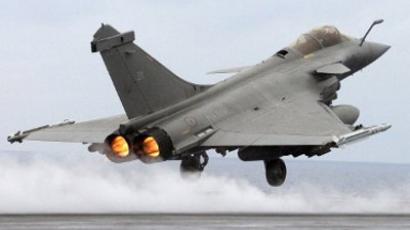Libya tribal hack and slash: Hundreds killed and wounded in week
Clashes between warring factions are heating up in western Libya. Tribes that once supported the country’s uprising are battling each other and pro-Gaddafi rival tribes - all against the background of freebee arms.
Press secretary of the Libyan government Nasser al-Manaa reported that clashes between three tribes from Az Zintan, Mizda and Al-Shegaiga village resulted in at least 105 deaths and more than 500 wounded just last week. The conflict reportedly flared over a strip of land repossessed by one of the tribes.Al-Manaa revealed that the violence was stopped only after a government military presence was established in the region.The number of dead and injured in Libya is comparable to the body count in Syria and following UN rhetoric, the ongoing violence in Libya strikingly resembles a civil (tribal) war.Tribalism is an age-old challenge for Libya, always threatening stability and security. Former leader Colonel Muammar Gaddafi had managed to curb many tribal conflicts throughout the 42 years of his rule, often by using force. When an armed tribal rebellion broke out in 2009, Gaddafi had to use Air Force to bring the rebels under control. Supported from abroad, an uprising against Muammar Gaddafi started in February 2011. Severe fighting between rebels and Gaddafi supporters lasted till October 20, when Colonel Gaddafi was killed by a raging mob near the city of Sirte after rebels took control of the capital Tripoli.With Gaddafi gone, the National Transitional Council that came to power is facing the same dangers as the previous regime. The NTC has to deal with restless tribes that use the unstable position of central government to seize the territories of weaker neighboring groups.When the situation got tough, the Colonel distributed as many as one million Kalashnikov assault rifles among those who expressed at least minimum allegiance towards the regime. And that number is just a fraction of that stolen from devastated military arsenals later on.Libya appears to be so flooded with arms right now that even the grandchildren of today’s fighters will have enough thirty-round banana clips to sort things out for years to come.Independent journalist Thomas Mountain compares post-Gaddafi Libya to what has been going on in Somalia since the downfall of authoritarian leader Siad Barre in 1991. “Libya is a tribal society,” he told RT. “The problem is, we have an intertribal war breaking out that is very similar to what I see in Somalia, where you had a long-time strong leader deposed by internal and external forces, and the country breaking up into tribal conflicts.”He noted that the concept of Libya as a unified country is only very recent.“Libya never really was a country before the Italians came in,” he said. “The Italians lost it to the British. The British created Libya. They never really had a history, other than tribal. You take away their leadership, tribal warfare breaks out. And the thing is, you have real opposition. You have people within the tribe that were loyal to Gaddafi; you have people within the tribe that were with the rebels. So not only are the tribes fighting against each other, but they are also torn apart by fighting within.”














